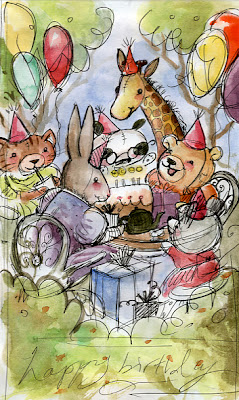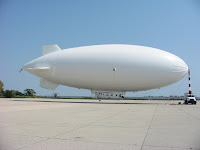Every year it is my goal to use the skills I developed while working full time at my last job (I was there for four years and the company sold gift bags, childrens books, greeting cards and other fun things to quite a variety of companies including Walmart, Costco, American Greetings and many a dollar store among other places). One of the downsides of selling to these big companies was that the end results of my work (the actual products) weren't sold or created in Canada. Now normally this wouldn't be a problem, but I am a very far drive away from our nearest border (which for me is Montana, a beautiful state packed with mountains and sweet smelling forests)... and for those of you who have had the wonderful experience of seeing your work in stores it's so so satisfying to see it being touched and admired by real people, even if they are standing on it while it's on the floor (this, by the way, happened to me when I was lucky enough to be able to go on a business trip to Nashville. In a dollarstore in the middle of the city people were frantically searching for the "perfect" Christmas gift bag all the while tossing things on the floor where the faces of my paintings were being covered by the mud on the streets beneath customers boots).
This story reminds me of the reality of commercial illustration, or perhaps illustration in general. We create art that is essentially disposable. Our paintings get admired for seconds, perhaps a few days at most then is thrown away or recycled. There are exceptions to this rule: Children's books can be cherished and read over and over, some greeting cards are saved for years and I've heard of people framing copies of art they've clipped from magazines.
While I know that not every child who gets a card I've created in their mailbox will treasure it I can't stop trying to make similar images than those I loved when I was little. Greeting cards and childrens books were the first things I could call mine and they were certainly evidence that an artist could influence and brighten my world. Not to mention it dispelled the idea that if you wanted to be an artist you had to be "starving". Someone must have been paid to create the cards I got for my birthday and there was no way the artists behind the Lion King weren't being compensated in some way (although at the time I would have licked dirt to have been one of their artists, forget paying me!).
So I'll continue to illustrate and create concepts that might, if I am so lucky, be turned into cards that are eventually thrown away (or at best recycled). Because heck, people might like my design so much that they will buy my card and fill it with money. If that doesn't make my card worth more to someone, I don't know what will!
By the way: Here's the concept sketch:







Crystal! I couldn't agree more with the whole "disposable" art thing. This is a great piece also BTW. Your work is always filled with such charm and cuteness.
Also, on a note from the last post you had, fill me in on how that's working for you, or why you decided to go that route. I've also considered that site before.
Keep up the great work old (but younger than me) friend!
-Mike
Well put Crystal! It is nice to think of work not just being worth a quick look (and smile!), but something attached to learning and being a bit more permanent. Cute card as well.
I too agree! But it is nice to know that it at least brought a smile to someones face, even for just a second. Piece turned out great BTW :)
Charming piece! Love it!!! I hope you walk into a shop one day to find me hugging your artwork. :)